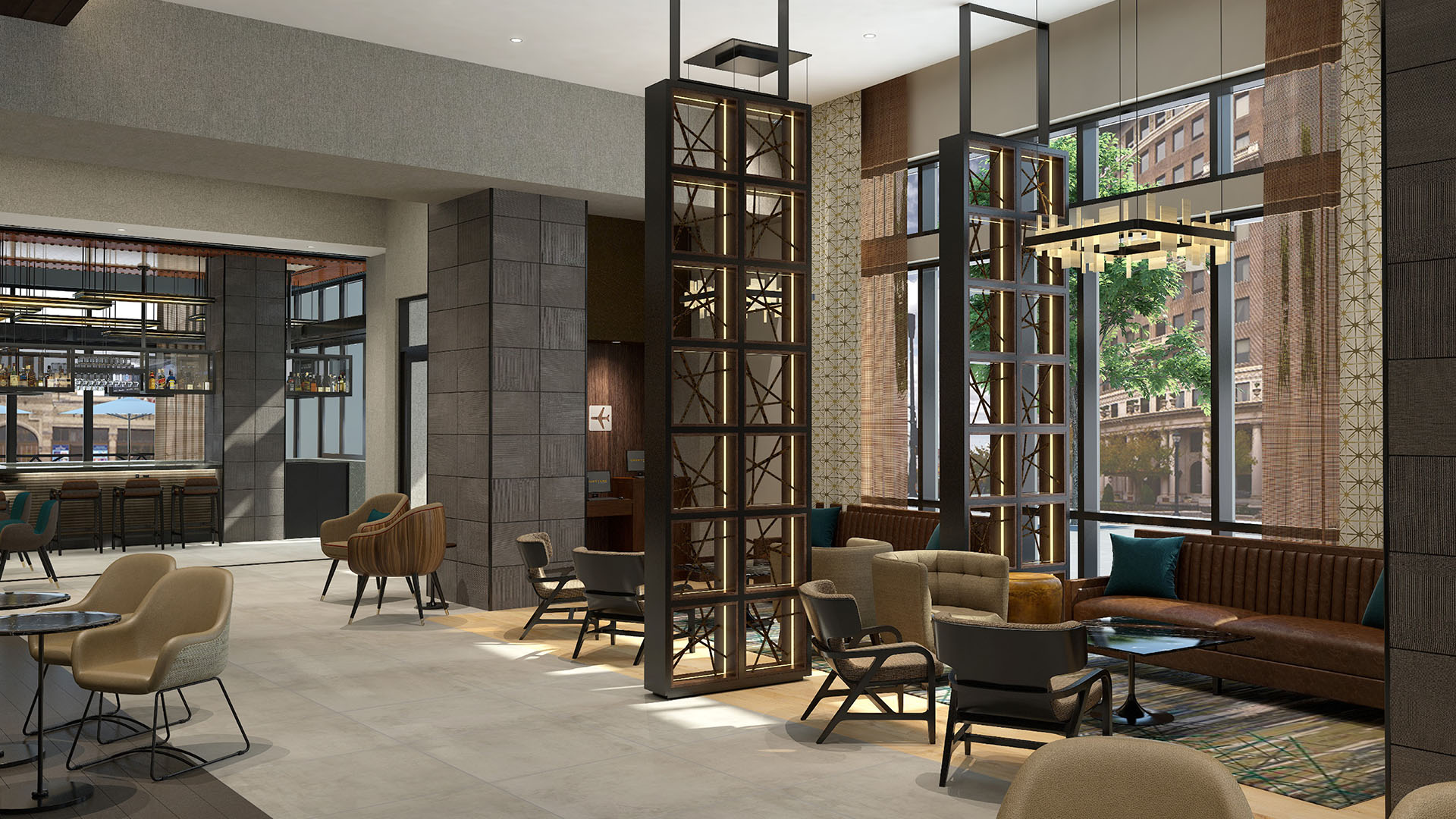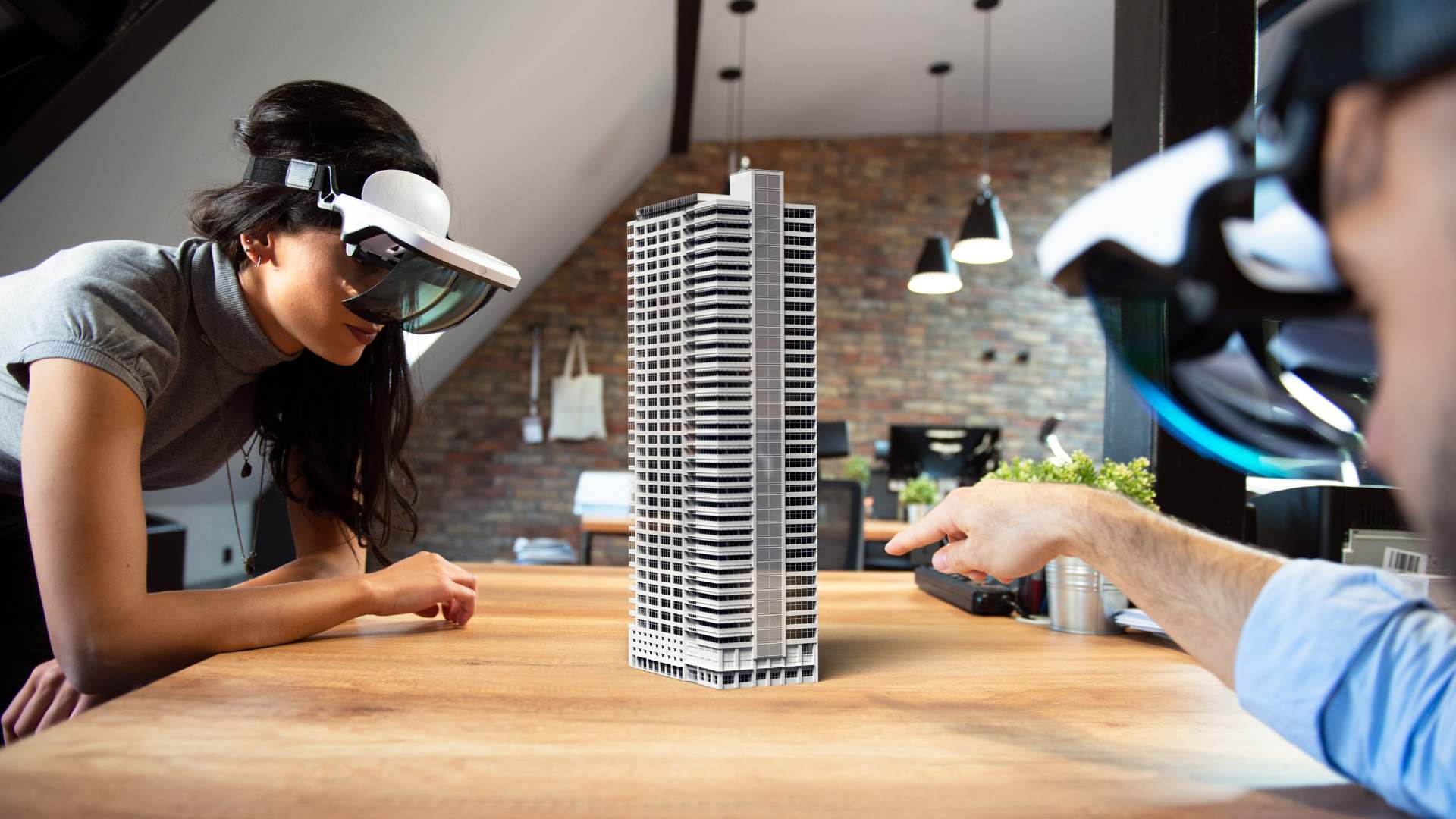By enabling the overlay of 3D architectural renderings with real-world environments, AR (augmented reality) is revolutionizing design and construction processes. AR is transforming the digital landscape of architecture, offering designers and builders a dynamic toolkit that enhances their capabilities in myriad ways. In this blog, we explore the benefits of augmented reality for architecture and how it’s reshaping the industry.
Enhancing Early Design Stages With AR

Augmented reality offers architects and designers immense value, especially in the early stages of design. It serves as a creative canvas, allowing professionals to experiment with architectural forms, space proportions, site orientation and material finishes. AR empowers non-designers to grasp the intricacies of architectural compositions, enabling stakeholders to “walk the site” and visualize the project long before it breaks ground.
Real-Time Collaboration in the Age of Remote Work
The COVID-19 pandemic accelerated the need for remote collaboration: Augmented reality for architecture is at the forefront of this transformation. Architects and project managers can create virtual workspaces for AR and VR collaboration, enabling real-time interactions among team members. For instance, a job supervisor on-site can use AR to bring in a virtual team member who can view a 3D model of an upcoming construction phase, enhancing communication and problem-solving across all phases of a project.
Unearth Hidden Opportunities in Underground Construction
AR’s ability to reveal hidden layers makes it a valuable asset in underground construction projects. Instead of sifting through piles of blueprints tucked away in government offices, builders can use AR to create accurate underground models. This helps teams assess the feasibility and safety of excavation activities, facilitating real-time adjustments and minimizing risks.
Efficient Training and Inspection
Augmented reality for architecture presents a golden opportunity for training new employees, offering clear instructions for potentially hazardous tasks. By integrating training modules into AR platforms, workers can learn on the job with reduced risks of errors or injuries.
Additionally, AR simplifies construction inspection by enabling instant comparisons between the built structure and building information modeling (BIM). Inspectors can annotate elements, take photos and highlight discrepancies, streamlining the inspection process.
Optimize Facility Operations and Maintenance

Augmented reality for architecture continues to prove its worth even after a building’s completion. Operations and maintenance staff can employ AR inspection to monitor a building’s condition over time. With an updatable digital model, teams gain real-time insights into a building’s performance, despite any structural changes over the years. When issues arise, experts can be brought into an AR environment to identify and mark up necessary fixes, enhancing communication and problem resolution.
Sequence Construction Processes With Precision
Builders and contractors are leveraging AR to streamline construction sequencing. Interactive 3D models pinpoint the duration of each step in the construction process, from excavation and concrete pouring to HVAC unit assembly and roof installation. This level of precision saves time by minimizing coordination efforts, improves efficiency and enhances material accuracy.
According to research conducted by IBM, companies using AR have reported an average productivity improvement of 32 percent, as well as a 46 percent reduction in time to complete tasks. Ultimately, augmented reality in architecture is contributing to more sustainable and cost-effective building practices for developers and builders.
Glimpse Into the Future: Augmented Reality for Architecture
Augmented reality has swooped in and revolutionized the architectural landscape by providing faster access to more information and data. With improved documentation, real-time collaboration and a visually rich digital environment, stakeholders can better understand construction progress and communicate changes effectively. Augmented reality for architecture is not just a glimpse into the future; it’s already reshaping the industry, making it more efficient, collaborative and sustainable.
Redefine the Way You Design and Build
Augmented reality is not merely a technological advancement; it’s a transformative force that empowers architects, designers, builders and stakeholders to reimagine the world of architecture. It enhances early design stages, facilitates real-time collaboration, optimizes construction processes and streamlines facility operations and maintenance. As AR continues to evolve, it promises to redefine the way architects design, build and experience architectural spaces.
At MaxWave3D, we know how difficult it is to truly express your vision to all audiences. Our 3D architectural visualizations and rendering experts will show precisely how your building will look: inside, outside and onsite. We offer a full suite of images with consistently high quality so you always have what you need. Contact us today to combine 3D architectural renderings with augmented reality and bring your designs to life
